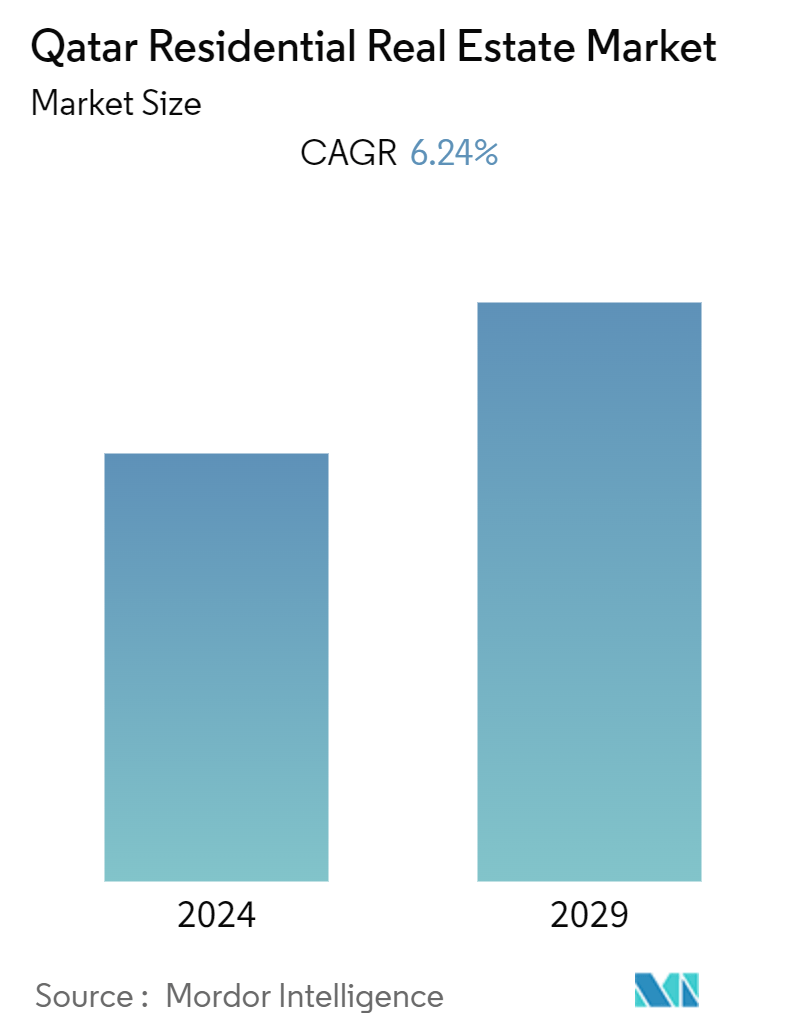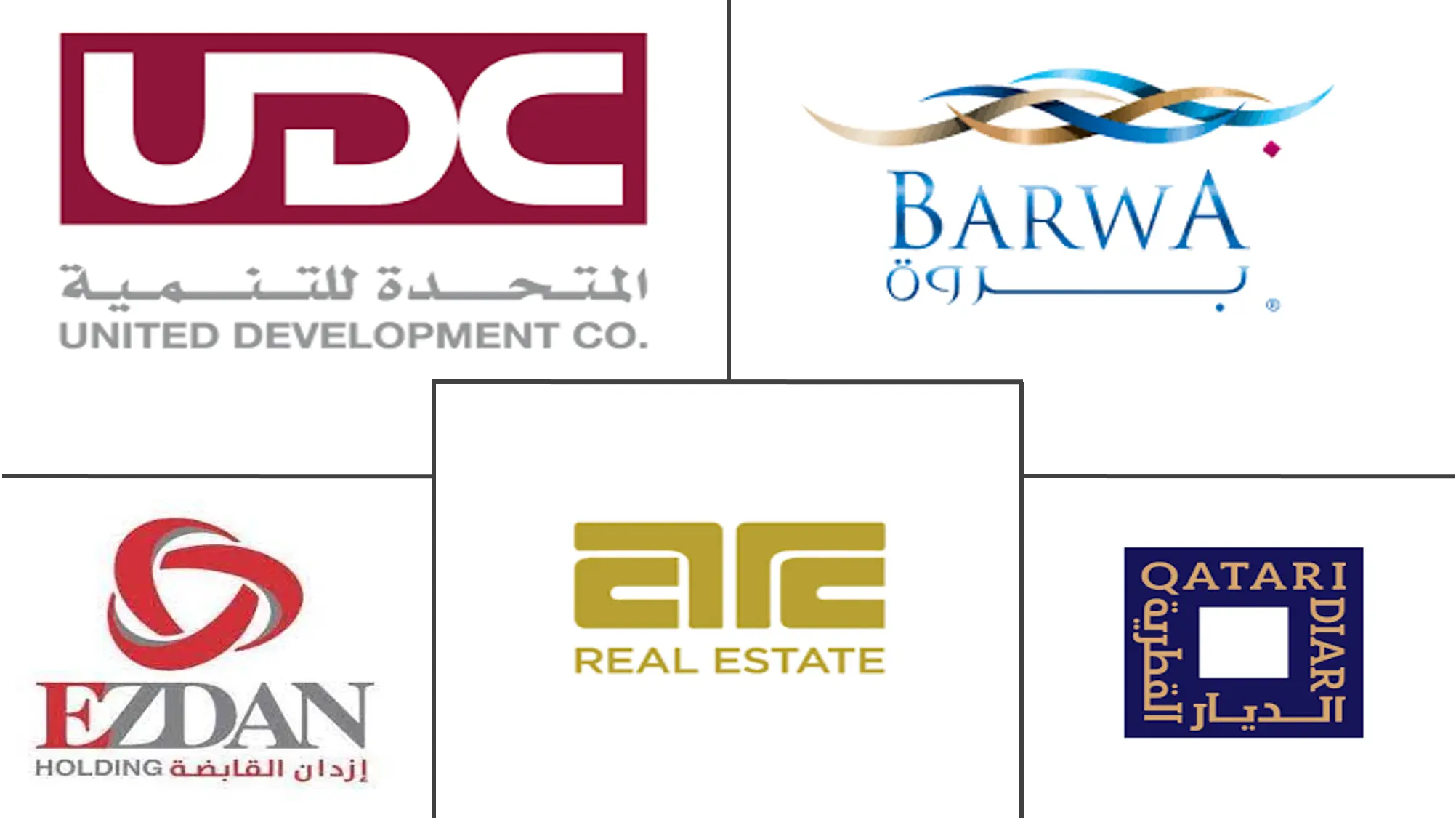Market Size of Qatar Residential Real Estate Industry

| Study Period | 2020 - 2029 |
| Base Year For Estimation | 2023 |
| Forecast Data Period | 2024 - 2029 |
| Historical Data Period | 2020 - 2022 |
| CAGR (2024 - 2029) | 6.24 % |
| Market Concentration | Medium |
Major Players
*Disclaimer: Major Players sorted in no particular order |
Need a report that reflects how COVID-19 has impacted this market and its growth?
Qatar Residential Real Estate Market Analysis
The Qatar Residential Real Estate Market is expected to register a CAGR of 6.24% during the forecast period.
The size of Qatar residential real estate market is USD 4.28 billion in the current year and is anticipated to register a CAGR of over 6.24% during the forecast period
- COVID-19 has negatively impacted the Qatari residential real estate market. Many residential projects were delayed or canceled due to COVID-19. Due to the COVID-19 outbreak and the subsequent collapse of global oil prices, the country's government requested the postponement of more than QAR 29.1 billion (USD 8 billion) in unawarded contracts on capital expenditure projects in April 2020.
- Qatar's economy is one of the thrivings in the Middle East. High GDP growth and population influx, aided by job opportunities and government legislation, are some of the drivers propelling the country's residential real estate market forward.
- The high net worth of the ordinary Qatari inhabitant, both local and expatriate, considerably impacts the construction industry, increasing the demand for luxury and well-organized residential areas.
- The population growth rate, combined with a steady supply of expatriate workers, is expected to generate further demand in the medium to long term. Over recent years, the Qatari government has adopted a series of legislative revisions aimed at preserving the rights of residential building investors in response to rising development activity in the industry.
- Qatar's expanding population, along with a strong demand base and high discretionary income levels, suggests that demand for residential real estate will likely continue to climb in the near future. Despite their wealth, the bulk of Qatar's expatriate population prefers to rent rather than buy. Tightened personal credit restrictions have exacerbated the problem of low homeownership.
- UrbaCon Trading and Contracting (UCC) agreed to build two residential complexes in Al Wakra, Qatar, totaling more than QAR 5 billion (USD 1.37 billion). Al Wakra, a traditional fishing village, is currently Qatar's second-largest city and home to the 40,000-seat Al Janoub football stadium, designed by Zaha Hadid; Al Wakra will be a significant destination for the 2022 World Cup.
- Qatar expects this to serve as a springboard for future expansion, with high-end homes at the center of the city's development. Qatar's Namaa Doha Real Estate firm has broken ground on its 49 high-end villa projects in Giardino Village - The Pearl.
- Construction works on the residential project are progressing at a steady pace, with the project currently scheduled for completion by the end of 2022. The project will also offer investment opportunities at 49 standalone villas, with each villa comprising two levels, a basement, and a penthouse, in addition to a private pool and parking spaces.
